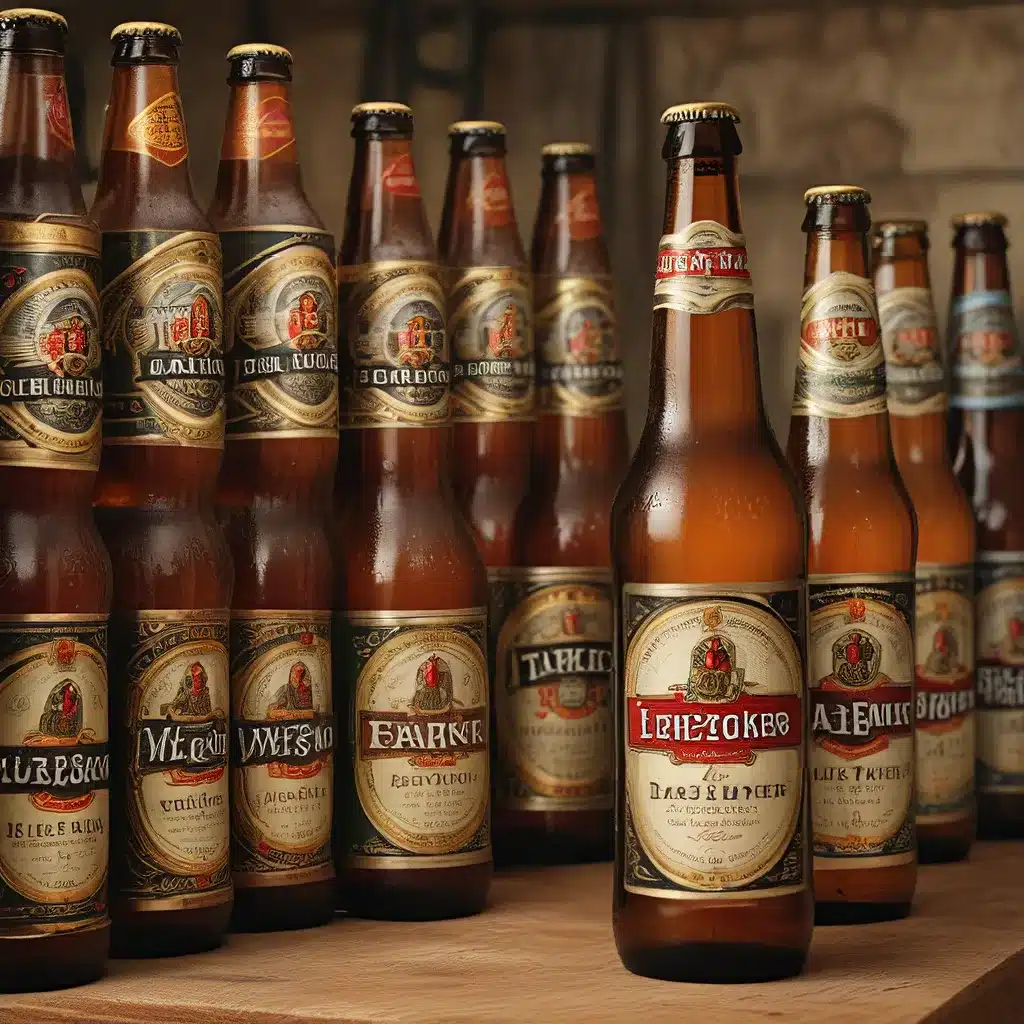
Ah, the humble lager – a beer style that I daresay most of us have sipped on at one point or another. But did you know that this unassuming amber nectar has a rich and fascinating history that spans continents and centuries? Buckle up, my friends, because we’re about to embark on a journey through the rise and fall of the lager empire.
The Birth of Lager
Let’s rewind the clock to the 1800s, where two brewing pioneers – the Austrian Anton Dreher and the German Gabriel Sedlmayr – were busy shaking up the beer world. After a stint in England, these two visionaries returned to their respective homelands and began experimenting with newfangled malting and brewing techniques.
Dreher, in particular, zeroed in on using a special kilning process with a malt that would soon be known as Vienna Malt. In 1841, he unveiled what is believed to be the world’s first pale lager – a lighter-colored brew that was a far cry from the traditional dark beers dominating Central and Eastern Europe at the time.
Not to be outdone, Sedlmayr shortly thereafter came up with his own version of the amber lager, which would eventually be christened Märzen. Both of these innovative lagers were met with early success, but Dreher’s had a distinct advantage – his earlier debut helped it become one of the most popular and widely imitated beers of its era.
The Lager Boom
The lager style quickly took the beer world by storm, its popularity skyrocketing in the decades that followed. As Jeff Alworth so eloquently put it in his book The Beer Bible, “If a brewery submitted a beer like the one Dreher brewed to the Great American Beer Festival, it would lose points for not tasting like a Vienna lager.” Ouch, talk about a high bar to clear!
But the lager’s reign wasn’t meant to last forever. Just as quickly as it had risen to prominence, the style began to decline in the early 1900s, nearly disappearing not only from Europe but especially from its birthplace of Vienna.
A Tale of Two Lagers
Interestingly, the lager’s disappearance wasn’t total – it managed to cling to life in an unexpected place: Mexico. After Napoleon III invaded Mexico in 1861, he brought Austrian royalty to rule over the country, and with them came Austrian brewers who kept the Vienna lager style alive.
But this lager renaissance didn’t exactly stay true to its roots. Over time, the style diverged into two distinct versions – the historical original and what I’ll dub the “North American” style. The differences lie primarily in the grain bill.
The historical version developed by Dreher is almost non-existent today. It would have been a light amber color, with a grain bill that was almost entirely Vienna Malt and hopped with noble varieties for aroma and bitterness. As Alworth put it, “If a brewery submitted a beer like the one Dreher brewed to the Great American Beer Festival, it would lose points for not tasting like a Vienna lager.”
On the other hand, the North American version, kept alive in Mexico, often features a grain bill that includes not just Vienna Malt, but also larger amounts of Munich and Caramel malts. This results in a slightly darker color and a deeper, grainier, more malty flavor profile. Some Mexican versions have even added flaked corn adjuncts to impart a touch more sweetness.
The Craft Beer Revival
Thankfully, the lager’s story doesn’t end there. In recent years, the craft beer revolution has seen a resurgence of interest in this often-overlooked style. And let me tell you, some of these modern interpretations are truly impressive.
Take Arches Mexican Empire, rated 97 by Beer Connoisseur – it hews pretty close to the historical Vienna Malt-centric grain bill, with just a touch of Carafa malt to darken the color. And KC Bier Co’s award-winning Festbier, rated 96, might be one of the closest approximations of the original Dreher lager made by a craft brewer in the US. With its Vienna and Pilsner malt base and traditional noble hop varieties, this beer is a true taste of history.
It’s heartening to see craft brewers keeping the lager flame alive, preserving this storied style for a new generation of beer enthusiasts. And who knows, maybe one day we’ll see a return to the unadulterated, light amber glory of Dreher’s original creation. A beer nerd can dream, can’t they?
The Lager’s Enduring Legacy
As I sip on my latest craft lager, I can’t help but marvel at the resilience of this humble beer style. Despite being dismissed by some as “pale, watery, and boring,” the lager has proven itself to be anything but. From its humble origins in 19th-century Europe to its modern-day revival, this beer has withstood the test of time and evolved in fascinating ways.
And you know what they say – the more things change, the more they stay the same. Just like the lager, the world of beer is constantly in flux, with new trends and styles constantly emerging. But at the heart of it all, there will always be those classic, time-honored brews that capture our hearts and our taste buds.
So the next time you find yourself at The Up & Under Pub, sipping on a crisp, refreshing lager, take a moment to appreciate the rich history and storied journey that brought this beer to your glass. Cheers to the lager empire, may it reign eternal!

